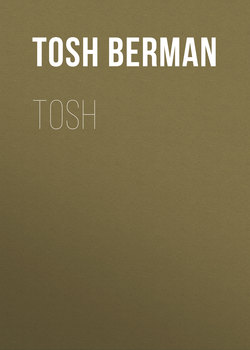Читать книгу Tosh - Tosh Berman - Страница 12
Ferus / chapter 6
ОглавлениеI never knew a time when Wallace was not an artist. I still have strong memories of him working on the left side of the living room in Beverly Glen. The smell of parchment paintings is still in my nostrils. I often think of my dad’s artworks in more of a textural context than a visual one. The smell of the parchment paintings (painted Hebrew characters) was a mixture of chemicals and glue, much like his later Verifax art. As a two-year-old, I was never told not to touch something, so I remember touching the paintings and feeling the layers of paint and glue over the work itself.
Wallace’s workspace in the Beverly Glen House always appeared calm and organized, but not in an obsessive manner. It must have been difficult for him to work, since people came by all the time. The compactness of the house appears to have pleased my mom and dad. All the homes I lived in, except in San Francisco, were tiny; even the Topanga Canyon house, which had a significant amount of property around it, was a small structure. But the Beverly Glen house, in all its glory, was just a shack on stilts.
CHARLES BRITTIN / Wallace Berman’s “Cross,” Ferus Gallery, 1957
COPYRIGHT © J. PAUL GETTY TRUST. SEE PAGE 312 FOR FULL CITATION.
One of the many people who came to the house was Walter Hopps. I knew Walter all my life, from a distance. He struck me as a nice person, but to a kid, his personality was cold. I never felt any warmth towards him, but I assume he must have shared many things with Wallace. Both had wives named Shirley, for one, and Walter was a jazzer, like my dad. Indeed, as a teenager, he even saw my dad dance in a South Central nightclub and commented that Wallace had a presence from the very beginning. They approached art from the same angle; even though Walter went to school, he was very much a street-smart guy who knew art. Most people at that time who were into art, I think, were either wealthy or very well educated. Walter didn’t learn art. He knew it by instinct. Walter was fortunate to hang out with the art collector and former modernist poet Walter Conrad Arensberg, who was a friend as well as a collector of Marcel Duchamp’s art. To this day, I don’t know if my dad ever met Arensberg, but what he had in common with Walter Hopps was a love of street culture and art. Also Walter had a Clark Kent vibe about him, not just because he wore black-rimmed glasses. There was something very mysterious about his presence, and how he carried himself. Even as a child, I thought he was eccentric and hiding that fact by wearing suits and ties.
Along with the artist Ed Kienholz, Walter started the Ferus Gallery, where Wallace had his first solo gallery show in 1957. It’s unclear what exactly happened, but the police were called and informed that the show contained obscene works. The police came by and shut it down. There was a daylong trial, my father was convicted of exhibiting pornography, and he had to serve jail time. Luckily, his good friend Dean Stockwell bailed him out of jail. It seems that Ed and Walter were cheerful enough that they got some sort of publicity, and if my father rotted in a jail cell—then what the hell! The Ferus Gallery would go on to become a major force in Los Angeles art culture, under the direction of Irving Blum, who took over curatorial duties from Ed and Walter and later gave Andy Warhol his first solo exhibition. There’s some controversy over whether Wallace was dropped from the gallery when Irving took over, or just left when he was convicted of the obscenity charge. But whatever Irving’s intentions, Wallace for sure was not going to do another exhibition at Ferus.
The irony of it all is that there was only one artwork in the exhibition that was very sexually graphic. This was a close-up image of a penis in a vagina and was hard to miss, but somehow the vice squad did. Instead, they chose to bust my father for an image that wasn’t by him, but rather by Marjorie Cameron, a drawing that was part of and within his assemblage. Wallace’s arrest might have been seen as a joke to some, but he took it very seriously and was deeply offended to be in that position. He was disappointed that mainstream culture would want to incarcerate him. He never mentioned what became of the artwork from that show. Most of it disappeared. Some claim that a worker at the Ferus Gallery, not knowing it was art, threw it away, and some, like me, feel that Walter and Ed knew a lot more about what happened to it. One artwork from the show was later discovered in Walter’s personal collection.
Wallace never had any harsh feelings towards Walter or Ed, but I suspect Ed didn’t like Wallace. I’ve heard rumors to the effect that Ed was jealous of a woman’s attention to my dad, or perhaps he was simply jealous of Wallace’s art, but I do believe Ed himself was the one who called the cops on the show. He probably didn’t think Wallace would get arrested; more likely he just wanted to create some publicity, which he did. But due to this experience, Wallace never had another solo commercial gallery exhibition in his lifetime. Wallace soured on the very idea of becoming a “professional” in the art world, and it was at this time he made the decision to move us to San Francisco.
